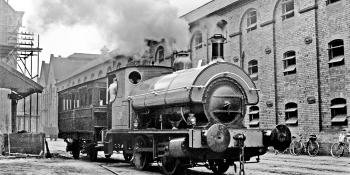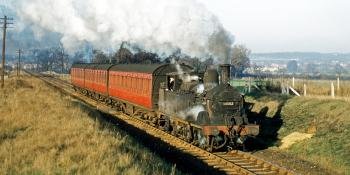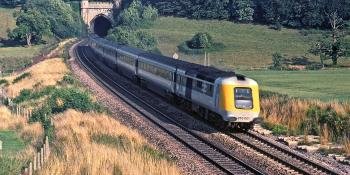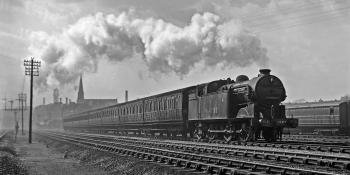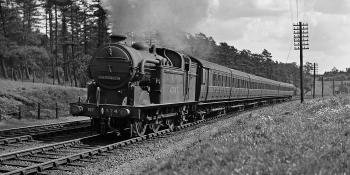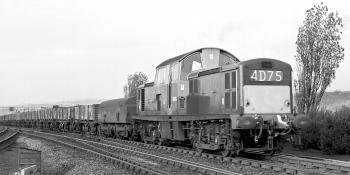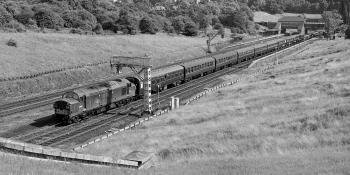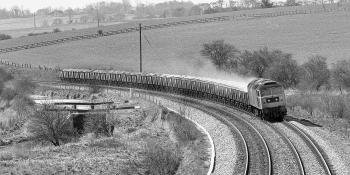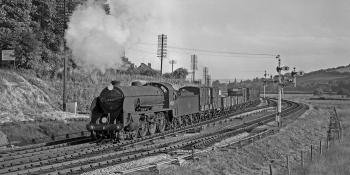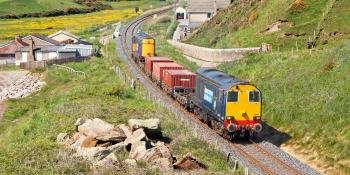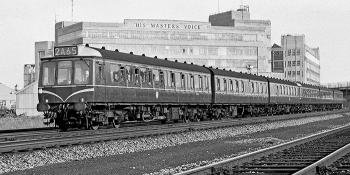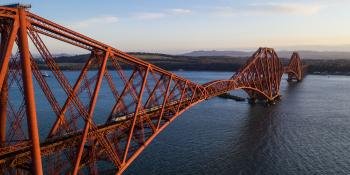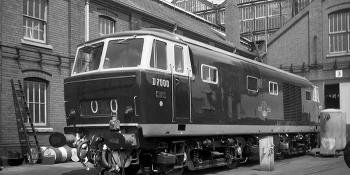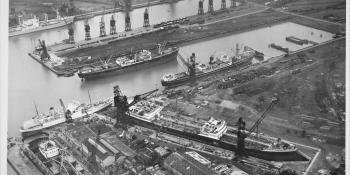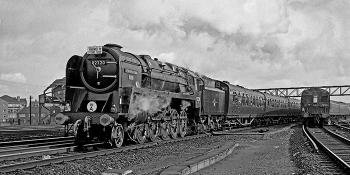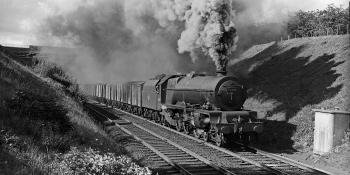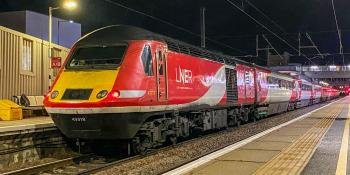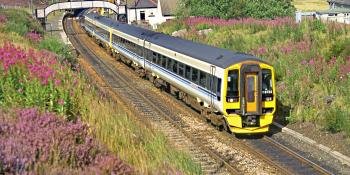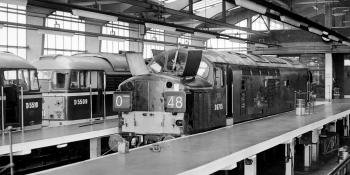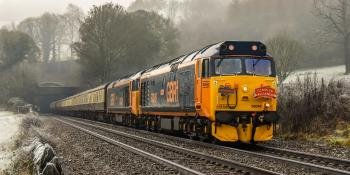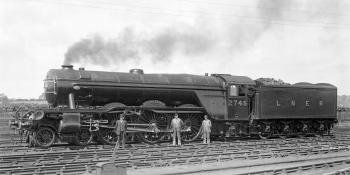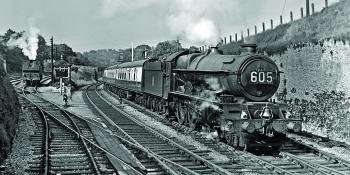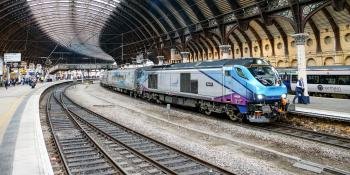RAILWAY HISTORY
Join us and delve into the archives to discover the stories of locomotive classes large and small, learn how the railway worked, and why it was built in this amalgamation of the popular Reality Check and Railway Realism sections from Hornby Magazine.
Brewery and Distillery lines
Drink production was given a huge boost by the development of Britain’s railways, with beers, wines and spirits becoming a large part of the economy. EVAN GREEN-HUGHES looks at how this traffic developed and how it became such a major source of income.
JOHNSON’S ‘1P’ 0-4-4Ts
For more than half a century, the Midland Railway’s primary lightweight passenger design for secondary duties was a very neat and attractive series of 0-4-4T engines designed by Samuel Johnson. EVAN GREEN-HUGHES looks back at the history of one of the variants of this once numerous class, and finds out why it was so long-lived.
Railways of the Lake District
The railways of the Lake District have long drawn admiration from passengers and enthusiasts – but as EVAN GREEN-HUGHES reveals, they also prompted poetic outrage from one of Britain’s legendary wordsmiths.
Reality Check: The prototype HST
The High Speed Train has proved to be one of the icons of British railway history since its inception almost half a century ago. EVAN GREEN-HUGHES finds out how the concept was developed and looks back at the first of the type.
Gresley's 'Quad-Art' coaches
Articulated coaches are often provided for the modern railway as a way of saving weight, improving capacity or for cost effectiveness, but the idea is not new and first appeared in the UK almost a century ago. EVAN GREEN-HUGHES takes a look at the famous ‘Quad-Arts’, which were amongst the most successful articulated vehicles ever to have operated in this country.
Reality Check: LNER ‘N2’ 0-6-2T
Perhaps the most popular model of the early Hornby Dublo period was the LNER’s ‘N2’ 0-6-2T, which launched the Dublo range alongside the Gresley ‘A4’ in 1938. Many variations, some more realistic than others, followed. EVAN GREEN-HUGHES looks back at the history of this often modelled but unappreciated class.
Dublo in the '60s
The Modernisation Plan of the 1950s created huge interest, with many clamouring to model the latest trains. Hornby Dublo was quick off the mark and often produced models even before the prototypes had taken to the rails, as EVAN GREEN-HUGHES relates.
The Clayton Type 1s
In its rush to dispense with steam locomotives, British Railways ordered many new diesels straight from the drawing board. One of the shortest-lived was the Clayton Class 17 – now the subject of a new model from Heljan. EVAN GREEN-HUGHES looks at the history of this handsome, but unreliable class in this feature from HM24 in 2009.
Split box Class 37/0s - the early years
One of the most successful diesel locomotives ever to run in Britain is the English Electric Class 37, a design that has now given 60 years of front-line service to our railways. EVAN GREEN-HUGHES looks back at the inception and early years of this popular machine.
Hard rock from the Mendips
Some of the longest and heaviest trains on the UK network originate in the Mendip Hills of North Somerset, and provide materials for many of the country’s biggest construction projects. EVAN GREEN-HUGHES takes a look at this traffic, which has grown tremendously over the years.
British Railways Southern Region
Bulleid ‘Pacifics’ racing third-rail Electric Multiple Units might be many people’s vision of the Southern Railway, but as GRAHAM MUSPRATT explains, from bucolic branch lines to archaic tank engines, there was much more to this famous company.
A load of rubbish!
Nudear waste has been a staple rail traffic for decades. SIMON BENDALL examines operation under Direct Rail Services following the release of Accurascale’s superb ’OO’ gauge wagons.
THE PRESSED STEEL CLASS 117
One of the longest-lived of the first-generation DMUs was the Pressed Steel-built Class 117, intended for the Western Region but later used in many other parts of the country. EVAN GREEN-HUGHES delves into the history of these highly regarded trains.
WARTIME HEAVY FREIGHT
In times of national crisis our railways are often called on to perform extraordinary feats, and in the Second World War freight traffic rose to such an extent that a special breed of locomotive was required to deal with it. EVAN GREEN-HUGHES explains all.
The 'A4s’ Scottish fling
The dieselisation programme of the 1950s should have meant a swift end for Gresley’s streamlined ‘A4s’, but some enjoyed a memorable swansong, with duties far removed from those with which they were traditionally associated, as EVAN GREEN-HUGHES found out.
Sliding doors
The Mk 3 carriage was one of the greatest designs ever produced for the railways of Britain and, although now almost 50 years old, it is heading for a new lease of life, thanks to the fitting of up-to-date features such as swing-plug and sliding doors. EVAN GREEN-HUGHES examines the latest developments.
LMS ‘8F’ 2-8-0 class history
One of the most numerous and effective classes of locomotive ever built was Stanier’s heavy freight ‘8F’ 2-8-0 – which varied careers at home and abroad, EVAN GREEN-HUGHES describes.
All change at Heaton Lodge
The subject of one of this issue’s layouts, Heaton Lodge in the Calder Valley has had numerous alterations over the years, mirroring the changing fortunes of the surrounding area, as EVAN GREEN-HUGHES describes.
‘Hymek’ Hydraulics
Lauded by many as one of the best looking of all the first-generation diesel classes, the Class 35 ‘Hymeks’ nevertheless had short working lives, with the last withdrawn almost half a century ago. EVAN GREEN-HUGHES explains the story of this distinctive hydraulic design.
Immingham Docks
Although railway companies were primarily concerned with the transport of goods and passengers their influence spread to many other areas, one of which was the creation of new docks and harbours. EVAN GREEN-HUGHES takes a look at how the Great Central Railway created one of the most impressive of these, at Immingham in north east Lincolnshire.
60 years of Evenıng Star
Sixty years ago this month a name was attached to the last steam engine to be built for British Railways. That name was Evening Star, and the locomotive on which it was mounted was to become one of the most famous in UK railway history, as EVAN GREEN-HUGHES recalls.
Stanier’s ‘Princess Royal’
Eclipsed in reputation by later and more famous designs, the ‘Princess Royal’ class ‘Pacifics’ of the LMS were nevertheless a radical step forward for that company. EVAN GREEN-HUGHES explains how the class started a golden era of West Coast steam.
Farewell to the ECML HST
On December 15 2019 the curtain came down on one of the most significant eras of the East Coast Main Line when the last HST was withdrawn from regular service on that route, marking the end of a 40-year period, as EVAN GREEN-HUGHES describes.
Class 158 and 159 DMUs
The Class 158 family of DMUs revolutionised secondary services all over the country on their introduction 30 years ago and have been reliable performers with many more years of service planned. EVAN GREEN-HUGHES tells us more about this popular class.
Maintaining the new diesels
The change from steam to diesel traction in the 1950s and 1960s brought with it a huge number of new challenges, not least at depot level where a whole new approach to maintenance had to be established. EVAN GREEN-HUGHES explains.
Class 50 afterlife
BR’s Class 50 diesels are some of the most popular locomotives ever built, and this has been reflected in the number preserved, which currently stands at just over a third of those constructed, as EVAN GREEN-HUGHES discovers.
Gresley's pioneering ‘A3' class 'Pacifics'
Much is known about the exploits of Gresley’s famous ‘A3’ Pacifics, including Flying Scotsman, but far less is known about the wider impact the class had on services on the East Coast Main Line. EVAN GREEN-HUGHES finds out more to mark the arrival of Hatton’s new ‘O’ gauge model.
BRITISH RAILWAYS Western Region
Chocolate and cream, lined green 4-6-0s, Brunel’s ‘billiard table’ and the torturous grades of the South Devon Banks were just a few of the components of British Railways’ Western Region. MIKE WILD looks back at what made this region of British Railways different to all the rest.
TRANS-PENNINE TRACTION
With its intense traffic levels, fearsome gradients and challenging timetabling, the north Trans-Pennine corridor has always held great interest for enthusiasts. Now services on this line are undergoing a radical upgrade, the latest in a series of improvements which have been continuously carried out since Victorian times, as EVAN GREEN-HUGHES discovers.
The Collett ‘14XX’
No model of the quintessential Great Western branch line would be complete without one of that company’s little 0-4-2Ts and matching autocoach. EVAN GREEN-HUGHES traces the origins of this attractive tank engine back to the mid-19th century.
